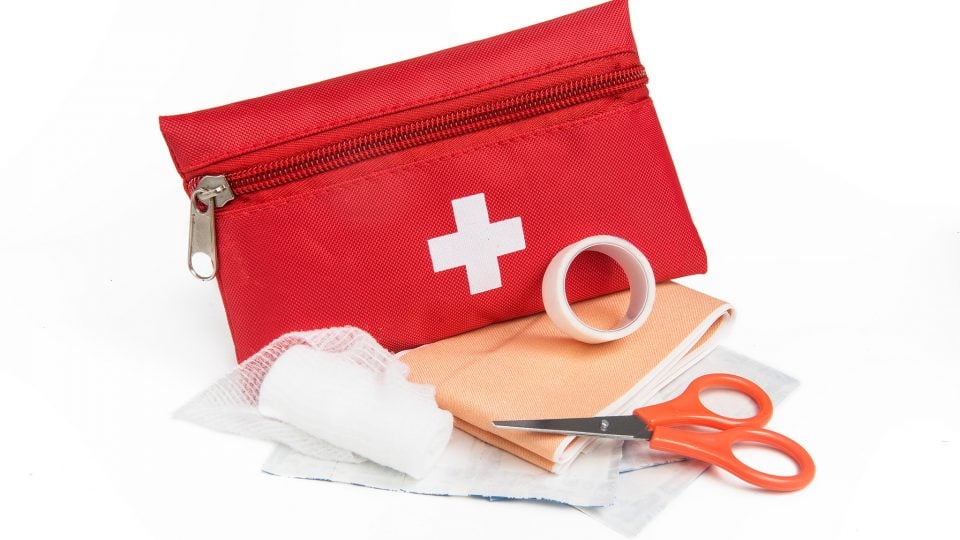As pet parents, we stay on top of dangerous substances in the home. Most of us know that grapes are toxic for dogs, harsh cleaning products should stay behind locked doors, and medicine must be kept out of reach.
We even keep a pet first-aid kit handy just in case (if you don’t have one, click here to learn how to make your own).
But sometimes, we need a reminder of other household items that can pose a threat to our dogs. Thankfully, the ASPCA Animal Poison Control Center releases an annual list of the ten toxins most commonly ingested by pets. Some of the items on the list might surprise you (I had no idea plain old ibuprofen was such a common danger to pets)! Read on to learn about the most dangerous items in your home.
The Top Pet Toxins of 2016
Plants
https://www.instagram.com/p/BTBfUpWAgkY/
Plants accounted for 5% of calls to the ASPCA Animal Poison Control hotline in 2016. You probably know a few of the most dangerous plants already, like lilies and poinsettias. But did you know that tulip and daffodil bulbs are highly toxic, too? In general, indoor plants should be kept out of reach of dogs. Outside, keep an eye on where your pet wanders and what she ingest.
Follow our tips to make a dog-safe garden.
Garden products
Fertilizers, fungicides, and herbicides, oh my! Commonly-used garden products can pose a big threat to dogs, and accounted for many of the calls to the poison control hotline.
Even organic fertilizer, with its delectable (poopy) smell, can be dangerous if ingested in large quantities. Keep all your garden supplies stored way out of reach of your dog.
Rodenticides (aka rat poison)
https://www.instagram.com/p/BR4dC0UlRVp/
This one’s a no-brainer: any product designed to eliminate one kind of animal is likely to be a danger to another! If you’re dealing with a rodent infestation at home, be sure to place traps and rodenticides in out-of-reach places your dog absolutely cannot access.
You might be better off calling an exterminator and taking the dog on vacation for a few days, just in case. Rodenticide poisoning accounts for over 5% of calls to the AAPC.
Insecticides
Most insect traps, poisons, and repellents come with a clear warning to “keep out of reach of children and pets.” Though designed to eradicate tiny bugs, insecticides can still be highly toxic to bigger animals.
Thankfully, the ASPCA reports a slight downturn in insecticide incidents in recent years. Always store your bug spray, ant traps, roach poisons, &etc. behind secure cupboard doors.
Chocolate
https://www.instagram.com/p/BRGy0nnATmH/
The Animal Poison Control line receives almost 40 calls per day from a worried pet person whose dog has ingested chocolate. We all know chocolate is bad for dogs, but most of us like to keep it around for a humans-only treat. Just be sure to store chocolate out of reach of your dog.
Household items (paint, glue, cleaning supplies, etc.)
https://www.instagram.com/p/mIIQYqy-HO/
The ASPCA reports tens of thousands of calls about household items every year, from people whose dogs who have licked up floor cleaner to people concerned about paint fumes and their pets.
Keep yourself off the list by putting products away as soon as you finish using them. You can also look into more earth- and pet-friendly cleaning alternatives. You can’t stop cleaning house (well, maybe you can…I know my place is overdue for a good scrub-down), but you can be mindful about what products you choose, and how you store them.
Veterinary products
https://www.instagram.com/p/BQojxWBAtAx/
This one might seem like a head-scratcher at first, because vet products are made for dogs, right? The danger comes when pets get ahold of over-the-counter joint supplements and prescription medications formulated for maximum tastiness.
Chicken-flavored heartworm medication is helpful for pill-shy dogs, but must be kept way out of reach to avoid accidental over-ingestion.
Food
Chances are, you know which foods are particularly dangerous for dogs. There’s the aforementioned chocolate; onions; and grapes. In recent years, the ASPCA poison control line has gotten more and more calls about xylitol, an artificial sweetener commonly found in sugar-free gum.
Study up on the list of foods dangerous to dogs, and monitor what your pet eats.
Over-the-counter products (i.e. medication)
This broad category encompasses almost 17% of calls to the AAPC, and includes common medications, make-up, and body care products.
Surprisingly, ibuprofen is the most commonly called-about medication. Dogs don’t metabolize ibuprofen the same way people do, and it can lead to kidney and liver damage, even in small amounts. As a general rule, don’t give your dog human medication unless specifically instructed to do so by a vet.
Human prescription medication
https://www.instagram.com/p/ZWQeU0sSxG/
The number one most-often called about substance on the list, human prescription meds are a big danger to dogs, in part because they’re found in almost every household in America! Unsurprisingly, the most commonly called-about drugs are the ones most commonly prescribed to humans. That includes heart medications, antidepressants, and ADHD meds.
For maximum safety, always store medications high out of reach behind a closed (and even locking) cabinet door.
For more on substances that are toxic to dogs, visit the Animal Poison Control Center website. And if you suspect your pet has gotten into something toxic, call your vet (or the hotline) right away.
A lot of the items we keep in our house are potentially harmful to pets, but you don’t have to live in fear of your dog being poisoned. With knowledge, preparation, and common sense, you can protect your dog from harm (and still keep a clean house with the ibuprofen in the cabinet)!
Preview image via flickr/varjohaltia



